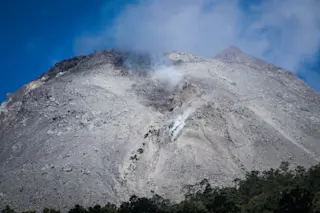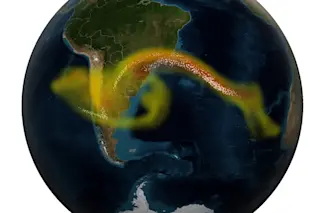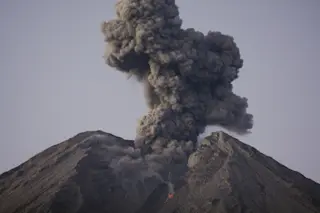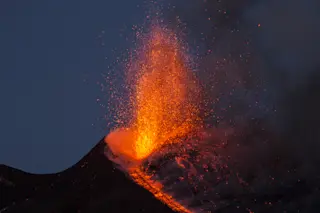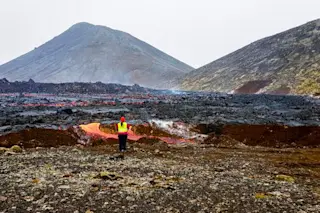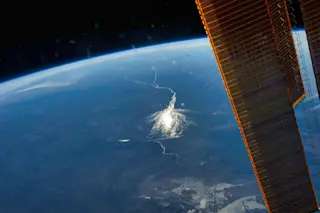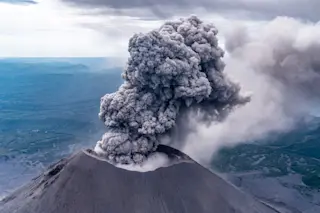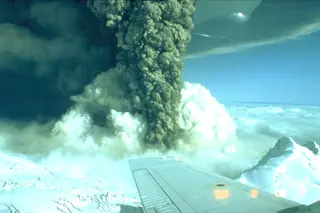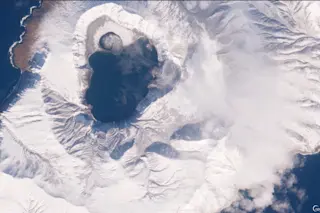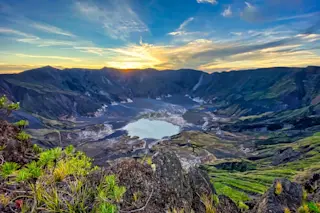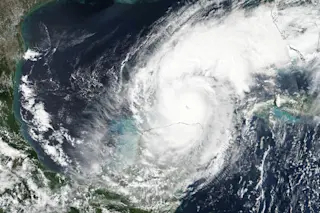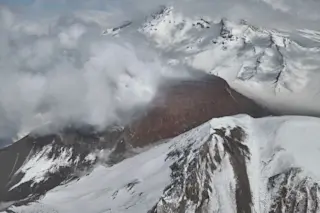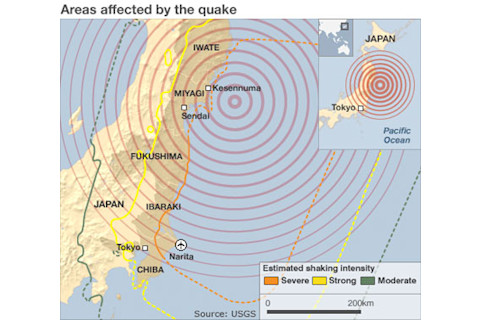
Japan's massive earthquake today may be over, but we're still feeling the effects, from nuclear reactor scares in Japan to tsunami warnings along the entire west coast of North America, from Mexico to Alaska's Aleutian Islands. Much is still unknown about this earthquake, including official destruction assessments and total death tolls, but here's what we do know: Two preliminary earthquakes with magnitudes of 7.2 and 6.3 struck off the coast of Honshu, Japan, the day before the major blow: This 8.9-magnitude quake---the largest in Japan's recorded history---struck at 2:46 pm local time on Friday, its epicenter located about 231 miles northeast of Tokyo at a depth of 15 miles. Even after this large one, over thirty aftershocks---the strongest measuring 7.1 in magnitude---continued to batter the island nation. The Immediate Effects Fires and collapsed buildings were the main cause of injuries and death early on, from conflagrations sweeping an oil refinery in Chiba prefecture near Tokyo to the roof collapsing during a graduation ceremony in Tokyo. But fears soon centered on Japan's nuclear facilities: Four power plants successfully shut down, but one experienced problems:
According to Nature's Tokyo correspondent, David Cyranoski, Japanese media are reporting that the emergency core cooling system (ECCS) at the Fukushima #1 plant is not working due to a loss of electrical power, and problems with the backup diesel generator. The reactor is currently relying on an alternate cooling system that circulates water using a pump system. This system can operate for about 7 to 8 hours. According to the Nuclear and Industrial Safety Agency of the government's industry ministry, this is the first time in Japan that the ECCS of a nuclear power station has not functioned. [Nature]
The local governments near the Fukushima plant urged the area's 2,000 residents to evacuate, though no leaks have been detected and the Japan Atomic Industrial Forum assured everyone (pdf) that Fukushima reactor's core "still has a sufficient amount of water for cooling, with no danger of the nuclear fuel being exposed". Why It Could Have Been WorseDeath tolls are uncertain right now, but what is known is that the numbers are currently in the hundreds---not the thousands. That’s through a combination of luck and preparation. Kevin McCue, a seismologist at CQUniversity in Queensland, Australia, told the Telegraph that the initial death toll would probably have been much higher if the epicenter were closer to Tokyo, instead of off the coast. But Japan was also very much prepared for this quake: Its main island---Honshu Island---sits at the intersection of the Eurasian, Pacific, and Philippine tectonic plates, as part of the notoriously seismically active Ring of Fire. Because earthquakes are a normal occurrence for Japan, their buildings stood up well considering the magnitude of the quake.
Over the years, Japan has spent billions of dollars developing the most advanced technology against earthquakes and tsunamis.... From seawalls that line stretches of Japan’s coastline, to skyscrapers that sway to absorb earthquakes, to building codes that are among the world’s most rigorous, no country may be better prepared to withstand earthquakes than Japan. [New York Times]
In addition to Japanese building codes and the earthquake’s location, technology is also helping the nation deal with the quake: Google, for example, has a Person Finder program that’s enabling Japanese citizens to search for loved ones or to post queries. Tsunami The quake shocks triggered over 30-foot-high waves to sweep across Japan’s coastal rice fields: It ripped homes from their foundations, engulfed entire towns, and caused the evacuation of thousands of people. "Roads were badly damaged and cut off as the tsunami washed away debris, cars and many other things," Hiroshi Sato, a disaster management official in Iwate, told the BBC. So far, at least one ship carrying 100 people is reported to be missing, and a dam burst near Fukushima prefecture. Outside of Japan, the National Weather Service has warned over 50 countries and territories about possible tsunamis. The smaller nations around Japan---such as Indonesia and the Phillipines---were considered especially in danger because, unlike Japan, their governments may not be able to adequately respond to such an emergency.
While some officials feared that waves from the tsunami could be high enough to wash over entire islands in the Pacific, at least one expert said it was unlikely.The tsunami could cause significant damage and flooding, but "washing over islands is not going to happen," said Gerard Fryer of the Pacific Tsunami Warning Center. [ABC]
When the waves reached Hawaii, the U.S. Geological Survey was surprised when the waves weren’t as high as expected---less than six feet. By the time the waves reach the west coast of the U.S., they’re likely to cause some coastal flooding and damage, but deaths should be avoidable.
Cindi Preller of the West Coast and Alaska Tsunami Warning Centre told Fox 11 News that the tsunami could cause some unusually high tides but not major inundations. She said it was possible that officials will ask that beaches be cleared as a precaution and believed that the situation on the California coast might be similar to the aftermath of last year's Chile quake. That quake caused some small waves but caused no major damage. [Daily Mail]
So while the water waves triggered by the earthquake make their way around the world, and Japan picks up the rubble from their strongest recorded earthquake, the main destruction from the fifth largest earthquake in the past century is over---and an even bigger disaster was avoided for Japan because of its strict building codes. Related Content: DISCOVER: Exactly What Happens to the Ground at a Fault Line? DISCOVER: Is the West Coast Ready for a Tsunami? DISCOVER: Waves of Destruction DISCOVER: The Next Big Quake Image: USGS


